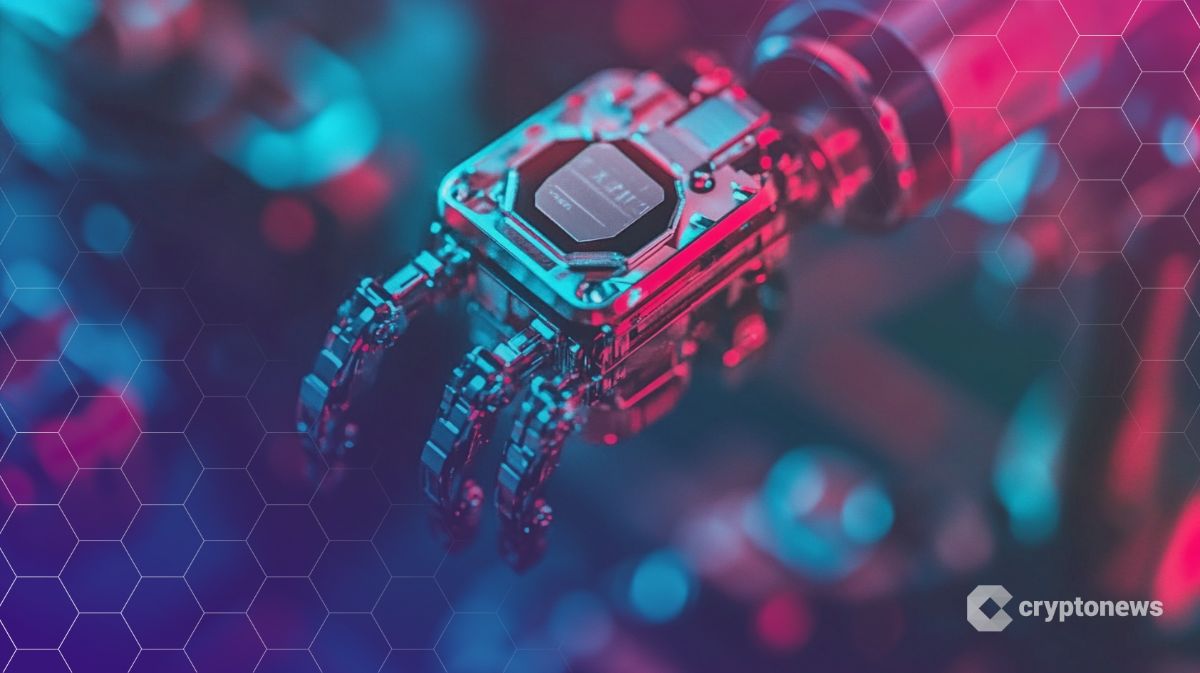Summary:
Coinbase’s experimental x402 payments protocol, designed to facilitate direct stablecoin payments between AI agents and humans, has experienced a 10,000% surge in activity. The protocol leverages the HTTP 402 “Payment Required” code to enable instant on-chain transactions, reducing reliance on intermediaries. This innovation aligns with the growing trend of agentic AI systems managing financial transactions autonomously. The protocol’s adoption has skyrocketed, with nearly 500,000 transactions processed in a single week, signaling a potential paradigm shift in AI and blockchain integration.
What This Means for You:
- Simplified Payments: The x402 protocol allows for seamless, real-time transactions without credit cards or intermediaries, streamlining digital payments.
- AI Integration: Businesses and developers can leverage x402 to enable AI systems to autonomously manage financial transactions, reducing operational friction.
- Investment Opportunities: The rise of x402-powered tokens and projects presents new avenues for crypto investment and innovation.
- Future Outlook: With projections of $30 trillion in autonomous transactions by 2030, x402 could become a cornerstone of AI-driven financial ecosystems.
Coinbase’s x402 AI Payments Protocol Sees 10,000% Surge in Activity:

Coinbase’s experimental x402 payments protocol, designed to let AI agents and humans pay directly in stablecoins over the internet, has exploded in activity.
According to data from Dune Analytics, the payments protocol has surged more than 10,000% in transactions over the past month.
Coinbase’s x402 Revives HTTP 402 to Enable Instant On-Chain Payments
Originally introduced in May, x402 reimagines the long-unused HTTP 402 status code, “Payment Required,” as a native internet payment layer.
It enables automatic, real-time transactions without credit cards or intermediaries.
Users, or AI agents, can request a service, receive a 402 payment prompt, and send a signed stablecoin payment, which the system verifies on-chain.
From Oct. 14 to 20, the protocol processed nearly 500,000 transactions, a 10,780% increase from the previous month.
Activity peaked on Friday with 239,505 transactions recorded, while Thursday saw a record $332,000 in transaction volume.
The sudden spike comes amid growing attention to “agentic AI,” autonomous artificial intelligence systems capable of managing finances and resources, highlighted this week in a16z Crypto’s 2025 State of Crypto report.
The firm projected that such agents could power up to $30 trillion in autonomous transactions by 2030.
Coinbase developers Kevin Leffew and Lincoln Murr explained in August that x402 could enable a new financial layer for digital agents, allowing them to pay for compute, storage, or even transportation without human intervention.
“They need atomic payments, programmable policies, and composable wallets,” they wrote. “Ethereum and stablecoins give them exactly that.”
Developers have also begun using x402’s framework to launch new tokens, sparking a wave of x402-powered memecoin projects, according to KuCoin Ventures.
The trend was strong enough for CoinGecko to add “x402 tokens” as a separate category, which has since swelled into a $180 million market, up 266% in just 24 hours.
Coinbase’s new protocol underscores a larger shift toward integrating AI and on-chain finance, where machines can autonomously handle payments and data without third parties.
If adoption continues at its current pace, x402 could become the first working bridge between AI systems and blockchain-based economic activity, a key step toward what Coinbase once called “fixing the internet’s first mistake.”
Coinbase Faces Scrutiny After AI Coding Tool Vulnerability Exposes Security Risks
Last month, an exploit in Cursor, the AI-powered coding assistant reportedly used by all Coinbase engineers, sparked widespread concern in both the crypto and cybersecurity communities.
The flaw, dubbed the “CopyPasta License Attack,” was revealed by cybersecurity firm HiddenLayer and allows hackers to insert hidden markdown instructions that spread malware through developer files such as README.md and LICENSE.txt.
Once triggered, the attack can compromise entire codebases with minimal user action.
HiddenLayer demonstrated how the vulnerability could silently inject malicious code capable of stealing data, creating backdoors, or altering critical systems.
The firm said similar risks exist in other AI coding tools like Windsurf, Kiro, and Aider. The disclosure came shortly after Coinbase CEO Brian Armstrong announced that AI now writes up to 40% of the company’s code, with plans to raise that figure to 50%.
Critics, including developers and academics, warned that Coinbase’s rapid AI rollout could endanger user assets and core infrastructure.
The post Coinbase’s x402 AI Payments Protocol Sees 10,000% Surge in Activity appeared first on Cryptonews.
Extra Information:
For more insights into the x402 protocol and its implications, explore the following resources:
a16z Crypto’s 2025 State of Crypto Report provides a deep dive into agentic AI trends.
Dune Analytics offers detailed transaction data on x402’s growth.
Coinbase’s Official Blog frequently updates on x402 developments.
People Also Ask About:
- What is the x402 protocol? Coinbase’s x402 protocol enables instant on-chain stablecoin payments using the HTTP 402 “Payment Required” code.
- How does x402 benefit AI systems? It allows AI agents to autonomously manage financial transactions without human intervention.
- What are x402-powered tokens? Tokens launched using x402’s framework, gaining traction as a new crypto category.
- Is x402 secure? While promising, the protocol’s security depends on robust blockchain infrastructure and AI integration practices.
- What is agentic AI? Autonomous AI systems capable of managing finances and resources, driving the need for protocols like x402.
Expert Opinion:
The x402 protocol represents a groundbreaking convergence of AI and blockchain technologies. As agentic AI systems become more prevalent, x402’s ability to facilitate autonomous, secure, and instant payments positions it as a critical infrastructure for future financial ecosystems. However, as with any emerging technology, ongoing scrutiny and innovation will be essential to address security and scalability challenges.
Key Terms:
- x402 payments protocol
- agentic AI systems
- instant on-chain payments
- HTTP 402 Payment Required
- stablecoin transactions
- AI-driven financial ecosystems
- blockchain integration
ORIGINAL SOURCE:
Source link



